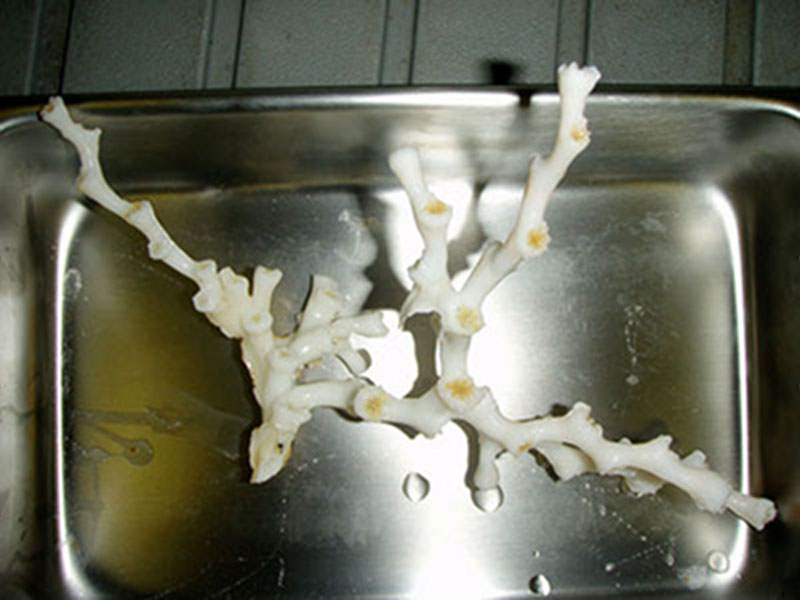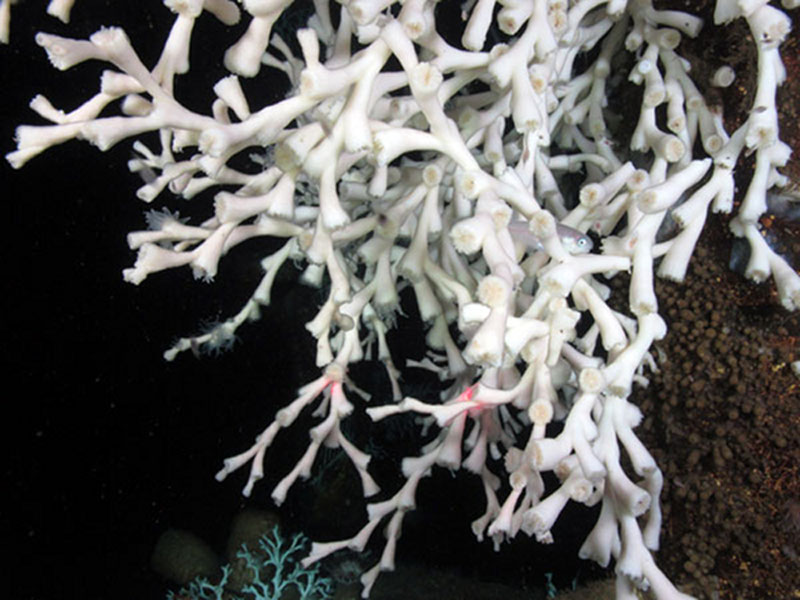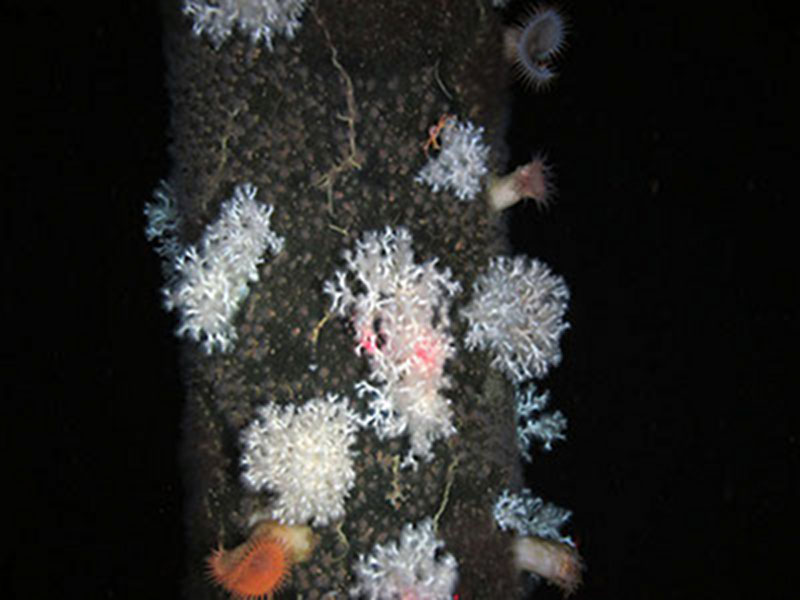
By Brian DeSanti II, Graduate Student - Florida State University
July 20, 2012

This Lophelia sample was collected during the first remotely operated vehicle dive at the Joilet platform in the Gulf of Mexico. The sample will be carbon dated to determine its age. Image courtesy of Lophelia II 2012 Expedition, NOAA-OER/BOEM. Download larger version (jpg, 1.28 MB).
Accurate dating of Lophelia pertusa skeletons is important to understand two very important life history characteristics of this deep-sea coral: growth rate and age. During this cruise, I am collecting coral branches from Lophelia on oil and gas platforms to use for radiocarbon dating – also commonly known as carbon dating. The skeletons of Lophelia (and other scleractinian species) are made almost entirely of calcium carbonate that they form using a variety of carbon sources, including seawater and metabolic carbon dioxide (CO2).

Lophelia imaged growing on the Zinc subsea installation, which was installed in 1992 at a depth of 457 meters. Image courtesy of Lophelia II 2012 Expedition, NOAA-OER/BOEM. Download larger version (jpg, 933 KB).
Scientists have used several different methods to age and determine growth rates for Lophelia in the Gulf of Mexico. Digital photography, staining corals on the seafloor, laboratory experiments, and radiometric dating have all been or are currently being used to age corals and to estimate their growth rates.
Digital photography and carbon dating are both being used to determine growth rates of corals seen on this cruise. The digital photography works best on surfaces with known ages, such as oil platforms and shipwrecks, with the minimum growth rate of the coral being determined by their length and the known age of the structure they have settled on. Carbon dating collected samples should provide us with more accurate ages and growth rates.

These coral were seen at Ram Powell, which, at a depth of 995 meters, was the deepest oil platform visited during the Lophelia II 2012 expedition. The two red laser dots on the coral are 10 centimeters apart. Image courtesy of Lophelia II 2012 Expedition, NOAA-OER/BOEM. Download larger version (jpg, 723 KB).
Carbon dating measures the decay of the carbon-14 (14C) isotope in the coral skeleton. The 14C isotope has a known decay rate that can be measured relative to the atmosphere to establish the age of the coral. By taking the difference in age between the distal and proximal pieces of a coral, we can determine the age and growth rates of the coral.
To prepare the corals to be carbon dated, they must first be soaked in a mixture of bleach and water to remove all tissue from the skeleton. After soaking in this mixture for about 24 hours, the skeleton is air-dried and the selected regions (distal and proximal ends) are removed and ground into a fine powder. The powder is then dissolved in phosphoric acid. This acidification results in a gas product, which is then collected and analyzed for the 14C using an accelerated mass spectometer (AMS). Clearly, highly advanced equipment is required for this work, which enables us to obtain a very accurate estimate of coral age.
The growth rates determined using carbon dating will help to establish the ages of Lophelia in the Gulf of Mexico, which will contribute to our understanding of the ages of coral mounds on the seafloor. Perhaps most importantly, resolving the ages and growth rates of Lophelia will give insight to their recovery potential following disturbances. All in all, this work will contribute to our expanding knowledge of the processes that govern Lophelia distribution and habitat preference in the Gulf of Mexico.